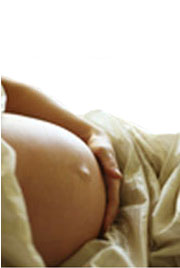- What is pain during childbirth?
- What are the management strategies of childbirth?
- Non-pharmacological control
- Pharmacological control
What is pain during childbirth?

- Delayed gastric emptying which can increases the risk of aspiration and/or hyperventilation.
- Increased sympathetic nervous system effects leading to hypertension, tachycardia and/or potential placental hyperfusion.
The onset of labour is denoted by rhythmic and forceful contraction of the uterus. There are three stages of labour, the first, second and third stages. Pain during the first stage of labour is generally felt in the lower abdomen, groins and lower lumbar and sacral regions. This is due to the dilation of the cervix and the lower segment of uterine followed by distension of the uterine body. On the other hand, the second stage of labour is associated with the lower back and anorectal pain, which is due to contraction of the uterus and pressure on the pelvic floor.
What are the management strategies of childbirth?
Management of pain during childbirth falls into two categories, the non-pharmacological (non-drug) and pharmacological (drug) approaches.
Non-pharmacological control
Antenatal instruction
Prior antenatal classes of the pregnant women about childbirth and non-pharmacological approaches of pain management can assists with analgesia during labour.
Relaxation and breathing techniques
Controlled breathing techniques applied during contraction, with support of partner or friends, can help with coping of labour.
Positioning and movement
Maintaining mobility is thought to play a role in reduction of childbirth pain. Altering positioning of pregnant women to whichever that is comfortable may be beneficial. However, lying flat on the back should be avoided due to the possibility of decreased placental blood supply, maternal hypotension and nausea.
Heat and cold, showering, massage
These are some extra non-pharmacological measures that can be experimented in order to alleviate the pain. Have your partner massaging your back as counterpressure may help to reduce the pain.
Transcutaneous eletrical nerve stimulation
Using transcutaneous electrical nerve stimulation (TENS) during labour may help to reduce the pain, in approximately 20% of women.
Hypnosis and medical acupuncture
There is insufficient evidence to suggest the benefits of such therapies in management of childbirth pain.
Pharmacological control

Bupivacaine hydrochloride
Bupivacaine is a local anaesthetic that stabilises the neuronal membrane and prevents the initiation and transmission of nerve impulses. This drug is very potent, four times that of lignocaine, and has a rapid onset of anaesthesia with prolonged duration of action. Bupivacaine is suitable for continuous epidural blockade.
Ropivacaine hydrochloride
This drug also behave in the same manner as bupivacaine with exception that ropivacaine has both anaesthetic and analgesic effects. At higher doses it produces surgical anaesthesia with motor block, while at lower doses it produces a sensory block, including analgesia, with little motor block.
Lignocaine hydrochloride
This medicine has the same mechanism of anaesthetic action to that of bupivacaine and ropivacaine.
Inhalational analgesia
Entonox is a self-administered gas formulation from equal concentration of nitrous oxide and oxygen. Its analgesic properties are well established.
This is a less effective option in controlling pain during labour requiring high concentration of nitrous oxide in order to provide adequate pain relief. Thus it is often accompanied with side effects such as drowsiness, nausea, vomiting and nitrous oxide gas intolerability.
Nitrous oxide requires minimum of 45 seconds to achieve maximal effective analgesia concentration. In order for this therapy to be effective it needs to be administered at least 45 seconds before the peak uterine contraction. Its administration should be discontinued once the contraction has subsided to prevent excessive sedation.
Parental opioids
IV or IM injection of pethidine or morphine is historically common. Although pethidine is the most commonly prescribed opioid during labour because of its shorter half-life compared to morphine, use of systemic opiates is declining because of their side effects: sedation/confusion in the mother, nausea and vomiting, and neonatal respiratory depression as well as limited evidence for their efficacy.
Pethidine
Pethidine is a potent drug used to relieve severe or constant pain such as childbirth pain, which cannot be controlled by any other pain relievers. Pethidine hydrochloride is a synthetic opioid with analgesic and sedative properties. It exerts its effects by acting on specific opioid receptors in the brain, through which they block the pain messages being delivered. In doing so, Pethidine decreases the brain’s awareness of the pain and provides pain relieve to the patient.
Like any other analgesics, Pethidine produces respiratory depression, drowsiness, sedation, mood changes, mental clouding, nausea, vomiting, and electroencephalographic (EEG) changes. Administration of large doses of pethidine may cause excitation and convulsions.
Morphine
Morphine is an opioid with sedative properties used to relieve severe or constant pain such as childbirth pain, which cannot be controlled by any other pain relievers. Morphine exerts its analgesic effects by acting as an agonist and activating the opioid receptors in both the central and peripheral nervous systems. In doing so, the pain threshold is elevated and the brain’s awareness of the pain is decreased.
Epidural analgesia
Epidural analgesia is an injection of local anaesthetic that passes into the epidural space via a catheter. This is probably the most effective form of pain relief in labour. It is usually inserted at the L2/3 or L3/4 space. It should provide complete motor and sensory blockade (except pressure afferent fibres). The level of epidural block usually extends distal from the upper abdomen.
In most centres, a combination of local anaesthetic and opiate is administered via the epidural catheter. This method improves pain control, uses a smaller dose of either drug, and therefore has fewer side effects.
There are medical reasons to advise for epidural anaesthesia such as prolonged labour, to lower hypertension, abolish premature sensation to push and in instrumental or Caeserean delivery.
As a consequence of epidural analgesia, women become immobile and require more frequent observations by a midwife. They will also require a catheter to avoid urinary retention. Further complications include spinal tap with severe secondary headache, intravascular injection of local anaesthetic (toxicity), low blood pressure, and maternal fever.
Epidural is strictly contraindicated in cases of maternal sepsis, any coagulopathy, neurological disease, spinal abnormalities, or hypovolaemia. Epidural is considered safe however in experienced professionals. Therefore, in such cases patient-controlled analgesia (PCA) can be used, only when appropriate facilities are available.
Some examples of epidural analgesia include bupivacaine hydrochloride, ropivacaine hydrochloride and lignocaine hydrochloride.
Spinal anaesthesia
Spinal anaesthesia is a local anaesthetic is injected into the CSF, which is readily effective with a short half-life. The main complications are hypotension. In a patient without epidural catheter, it is the method of choice for caesarean section.
More information
 |
For information on birthing statistics,stages of labour, various birthing types and other information related to giving birth, see Birth. |
References
- Therapeutic Guidelines: Pain during labour. [online]. Drugs used in inflammatory bowel disease. Version 4, 2006. Available at URL: http://www.tg.com.au (last accessed 26/09/07).
- Impey, L. (2004) Obstetrics and Gynaecology [2nd edition] Blackwell Publishing Ltd: Massachusetts
- Australian Medicine Handbook. Adelaide: AMH Pty Ltd; 2007.
- MIMS Online. Pethidine. [cited 2007 September 26]. Available from: http://mims.hcn.net.au.ezproxy.library.uwa.edu.au
- MIMS Online. Morphine. [cited 2007 September 26]. Available from: http://mims.hcn.net.au.ezproxy.library.uwa.edu.au
- MIMS Online. Bupivacaine Hydrochloride. [cited 2007 September 26]. Available from: http://mims.hcn.net.au.ezproxy.library.uwa.edu.au
- MIMS Online. Ropivacaine Hydrochloride. [cited 2007 September 26]. Available from: http://mims.hcn.net.au.ezproxy.library.uwa.edu.au
All content and media on the HealthEngine Blog is created and published online for informational purposes only. It is not intended to be a substitute for professional medical advice and should not be relied on as health or personal advice. Always seek the guidance of your doctor or other qualified health professional with any questions you may have regarding your health or a medical condition. Never disregard the advice of a medical professional, or delay in seeking it because of something you have read on this Website. If you think you may have a medical emergency, call your doctor, go to the nearest hospital emergency department, or call the emergency services immediately.







